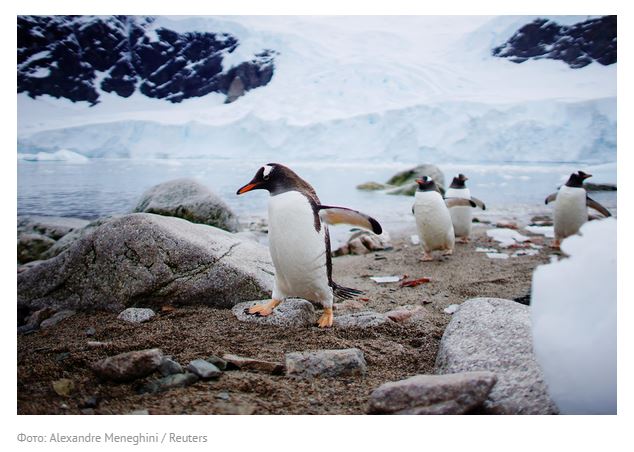November 04, 2015
Scientists confirm their fears about West Antarctica - that it’s inherently unstable. It may be the biggest climate change story of the last two years. In 2014, several research groups suggested that the oceanfront glaciers in the Amundsen Sea region of West Antarctica may have reached a point of “unstoppable” retreat due to warm ocean waters melting them from below. There’s a great deal at stake — West Antarctica is estimated to contain enough ice to raise global sea levels by 3.3 meters, or well over 10 feet, were it all to melt.
The urgency may now increase further in light of just published research suggesting that destabilization of the Amundsen sea’s glaciers would indeed undermine the entirety of West Antarctica, as has long been feared.
 In a new study published Monday in the Proceedings of the National Academy of Sciences, Johannes Feldmann and Anders Levermann of the Potsdam Institute for Climate Impact Research use a sophisticated climate model to study what will happen if these glaciers are, indeed, fully destabilized. And in essence, they find that the process of retreat doesn’t end with the region currently up against the ocean.
In a new study published Monday in the Proceedings of the National Academy of Sciences, Johannes Feldmann and Anders Levermann of the Potsdam Institute for Climate Impact Research use a sophisticated climate model to study what will happen if these glaciers are, indeed, fully destabilized. And in essence, they find that the process of retreat doesn’t end with the region currently up against the ocean.
“We showed that there is actually nothing that stops it,” said Levermann. “There are troughs and channels and all this stuff, there’s a lot of topography that actually has the potential to slow down or stop the instability, but it doesn’t.”
Or as the paper puts it: “The result of this study is an if–then statement, saying that if the Amundsen Sea Sector is destabilized, then the entire marine part of West Antarctica will be discharged into the ocean.”
West Antarctica can actually be considered the smallest of three planetary ice sheets — Greenland contains some 6 meters (20 feet) of potential sea level rise, and East Antarctica is the most vast of all, at nearly 60 meters, or 200 feet.
However, West Antarctica is currently believed to be the most vulnerable to rapid, large scale change, due to the fact that the Amundsen Sea’s glaciers are rooted on a seabed that slopes downward as you move further inland, in some places plunging a mile or more below sea level. The region’s largest glacier, the gigantic Thwaites, is bigger than Pennsylvania and over a mile in total thickness in places — and may be the single most vulnerable point.
Indeed, Antarctic scientists have expressed a strong consensus that they need to conduct a lot more research in this very remote area as soon as possible, to determine how fast the change could happen.
The current study was not an example of — and cannot replace — this difficult fieldwork. Rather, the researchers used a complex ice sheet model that simulated the entire West Antarctic ice sheet, as well as the Antarctic peninsula and some of East Antarctica. They then simulated what they termed a 20 to 200 year “perturbation” to the region, in the form of increased rates of melt similar to what is believed may have already happened. “Our modeled sea-level contribution from the perturbed region lies well within the range of observations,” they say.
With a 60 year or greater perturbation, the model — which, the researchers caution, is only “a single realization of an ice-sheet model that applies approximations to the ice dynamics” — then produced a retreat that continues even without continuance of the perturbation. That is, after all, precisely what has been feared — that the region has an inherent “marine ice sheet instability,” as researchers put it.
“If you have a situation where the bedrock is declining when you go inland, that means that wherever the grounding line is, it is thicker the further it is inland,” explains Levermann. “Which means the [ice] flux is bigger the further you go inland. Which means you lose more ice the further you go inland, which is the vicious cycle.” Levermann confirmed, by email, that this in effect means that there is an “inherent” instability to West Antarctica, based on his new research.
http://www.pnas.org/content/early/2015/10/28/1512482112